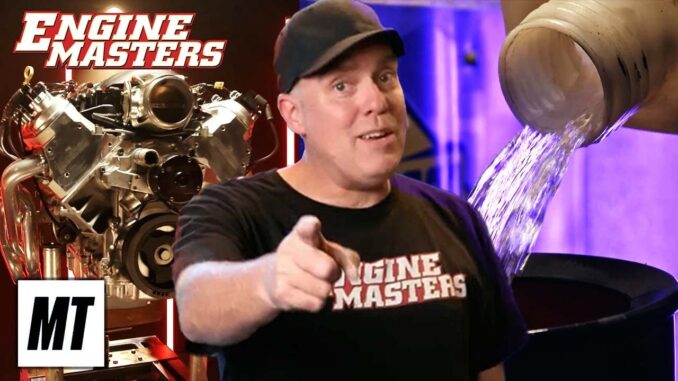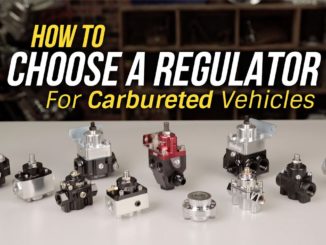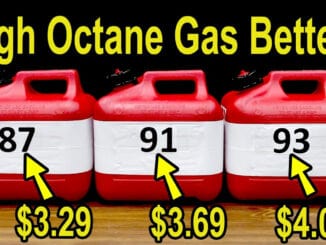
The Engine Masters audience has often demanded a showdown between different fuel types, leading to an intriguing experiment. The goal was to compare the performance of various gasoline octane levels, race gas, and even ethanol (E85) on an LS3 6.2-liter crate motor. This article presents a paraphrased summary of the episode, highlighting the essential findings and conclusions regarding each fuel type’s impact on power and performance.
Testing Low Octane Pump Gas, Race Gas, and Ethanol
The testing compared 87 and 91 octane California pump gas, followed by Sunoco leaded race gas in 110 and 116 octane ratings. Finally, the experiment included E85, an ethanol-gasoline blend, to determine if it offered additional power advantages.
Results with Pump Gasoline
After conducting timing sweeps, the optimum ignition timing was determined to be 29 degrees with the 87-octane pump gas. Further tests revealed that an air-fuel ratio (AFR) of 12.8 to 12.9 provided the best performance. The engine delivered close to the advertised power output of 530 horsepower and 495 pound-feet of torque.
Similar results were observed with 91 octane pump gas, favoring 29 degrees of ignition timing. Although it required a slightly leaner AFR (around 13.5 to 1), the power gains were minimal compared to the 87-octane fuel.
No significant changes were noticed when transitioning to Sunoco leaded race gas at 110 or 116 octane levels. The engine preferred 29 degrees of timing and an AFR of 12.7 to 12.8, producing power outputs within the expected range.
Unveiling E85 Performance
The final part of the experiment involved testing the engine’s performance using E85. Contrary to expectations, E85 showcased remarkable power gains. With the exact ignition timing of 29 degrees, the engine achieved a higher peak horsepower of 551.5 and torque of 506.5 pound-feet. The average power numbers also showed significant improvements over the other fuel types.
Conclusion
The findings suggest that if an engine doesn’t experience knocking issues with its current fuel, switching to a higher octane fuel will not yield additional power gains. E85, on the other hand, proved to be a notable exception, showcasing enhanced power and torque characteristics compared to gasoline.
Although the power gains with E85 were substantial, it is essential to consider the downsides. Methanol, which E85 contains, is corrosive and hygroscopic, requiring regular fuel system maintenance. It also demands higher engine temperatures for proper vaporization.
In conclusion, for naturally aspirated engines running on pump gas, E85 may offer a slight performance boost. However, for engines with high compression ratios or forced induction, methanol-based fuels like E85 present a significant advantage due to their cooling properties and detonation tolerance.
By conducting thorough tests and analyzing the pros and cons of each fuel type, the Engine Masters show provides valuable insights for automotive enthusiasts seeking to optimize their engine’s power and performance based on their specific requirements.
via MotorTrend ~ Get more original automotive shows, live motorsports, and car enthusiast programming on MotorTrend — the world’s premier online automotive video destination!





